
Palm Beach County, Florida, a popular tourism destination with nearly 1.5 million people, is facing dangerous ocean conditions, which have prompted authorities to issue dire warnings.
The National Weather Service (NWS) has implemented a High Surf Advisory and High Rip Current Risk due to 5—to 7-foot waves coupled with the threat of dangerous rip currents. With seasonal onshore winds adding to the peril, these conditions create dangerous surf conditions for swimmers and surfers.
Rip currents, which can drag even strong swimmers out to sea, are among the leading causes of drowning deaths in Florida. Officials emphasize staying out of the surf unless supervised by a lifeguard and following safety advisories.
Florida’s Coastline

Florida has consistently led the nation in rip current deaths, with 143 deaths recorded between 2017 to 2023 — more than any state. These numbers are indicative of the persistent danger posed by rip currents along Florida’s coast.
Waves, rip currents, and shoreline erosion pose looming risks at the beach, with the potential for injury or death. Historically, efforts to warn people and keep them safe have included public awareness campaigns, though many beachgoers still take the threat lightly. The psychological tendency to ignore safety warnings further compounds the issue, as individuals often prioritize leisure over perceived risks.
Psychological Challenges
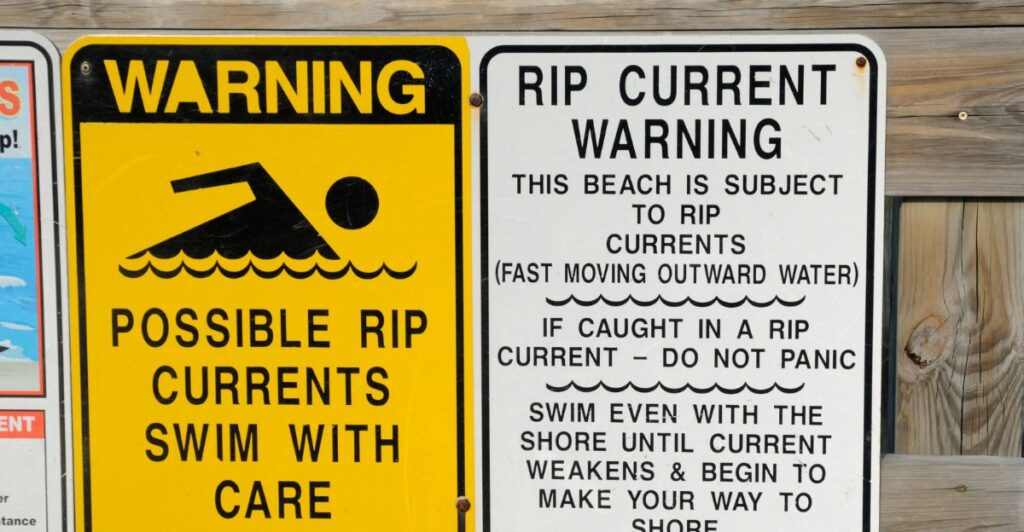
Humans are hardwired to ignore safety warnings due to cognitive biases. Research shows that humans make internal cost-benefit assessments when confronted with warnings, inadvertently downplaying perils when they seem unlikely or minor.
This behavior is seen among beachgoers who ignore advisories when signs clearly state otherwise. Misinterpretations of safety messages, such as misunderstanding ”swim between the flags,” further exacerbate the problem. These psychological barriers must be taken into account when optimizing adherence to mitigation strategies.
Economic Implications
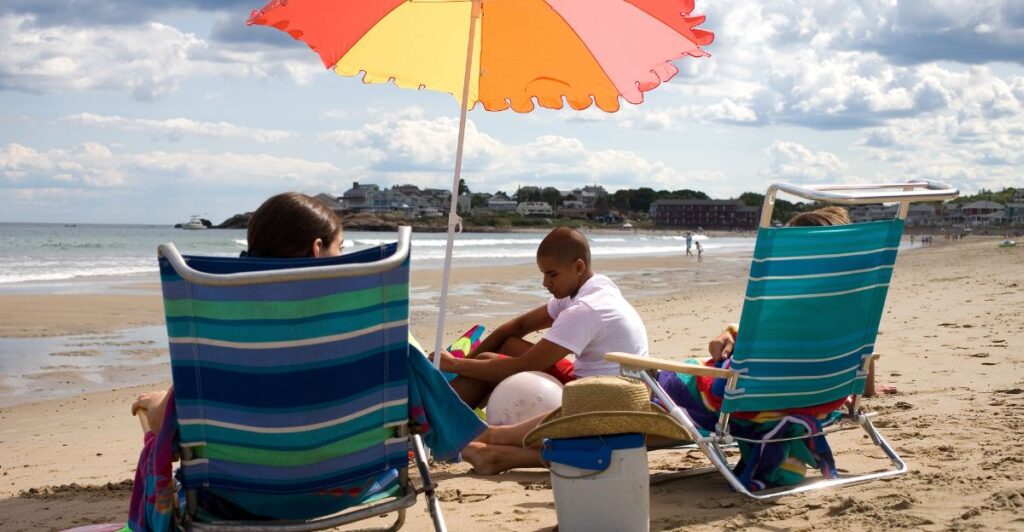
Dangerous ocean conditions can affect local economies that depend on tourism. Beach tourism in Palm Beach County alone brings in millions of visitors per year and provides a tremendous boost in revenue to local businesses.
However, advisories urging beach avoidance can reduce tourism revenue. Historical cases, such as beach closures to protect wildlife on Martha’s Vineyard, show that the long-term economic impact is negligible, but businesses that cater to beachgoers suffer short-term losses. Proactive measures can mitigate these effects while prioritizing public safety.
Environmental Factors
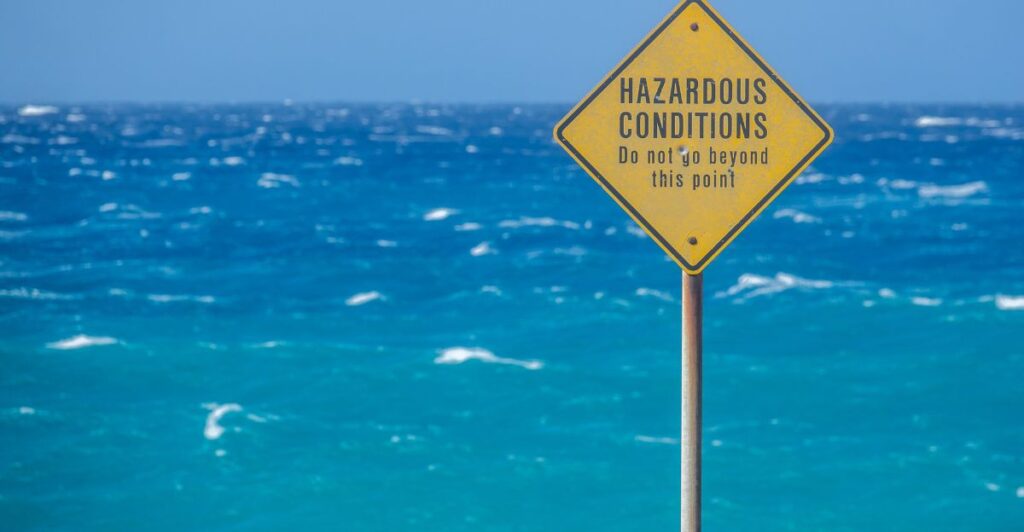
Seasonal onshore winds and shifting ocean currents cause dangerous surf conditions. These natural events increase wave heights and create stronger rip currents along Florida’s Atlantic coastline.
Knowing about these environmental features is important for forecasting dangerous conditions and issuing timely alerts. Improved monitoring systems and predictive models could lessen response times and lower risks to citizens and tourists1.
Safety Compliance Trends
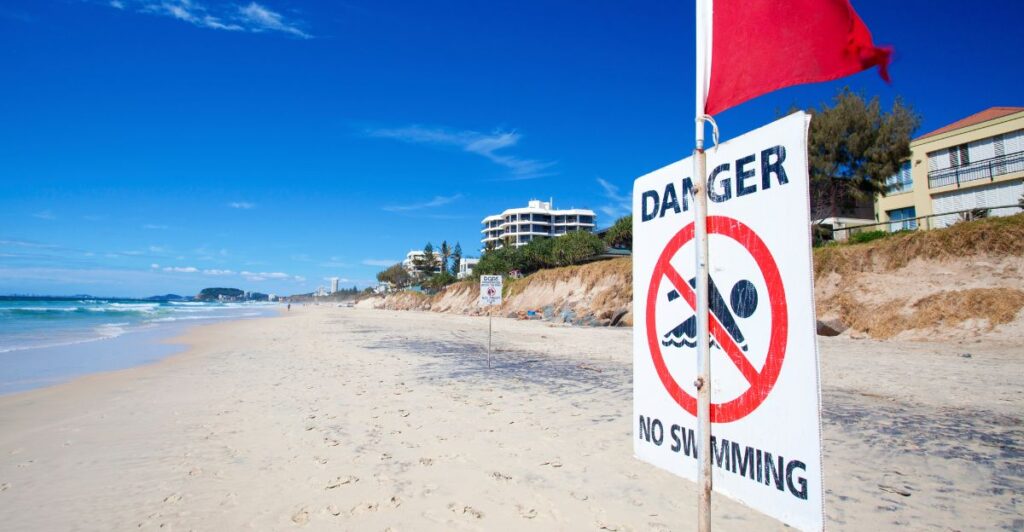
Despite increased efforts to educate the public on beach safety, compliance remains inconsistent. A study found that almost half of beachgoers surveyed seldom read safety signs or misunderstand their messages.
This trend underscores the need to find more creative and innovative ways to convey these messages, such as multilingual signage, interactive apps, or virtual lifeguard systems that provide real-time updates on ocean conditions.
Solutions and Strategies
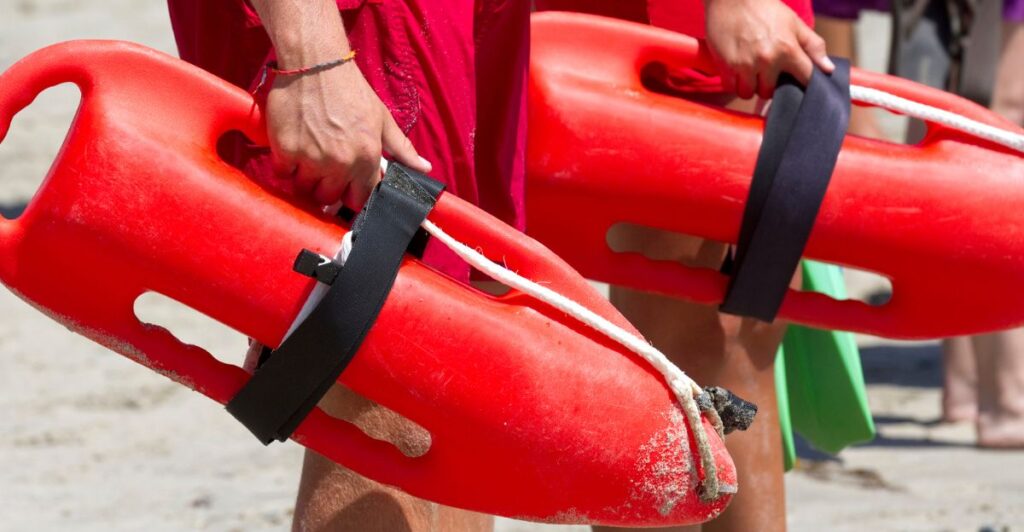
Reducing adverse events must involve multiple interventions. During peak seasons, authorities could assign additional lifeguards to pools and beaches and fund high-tech warning systems that use AI analytics to detect hazards in real time.
Public service announcements aimed at both residents and visitors should use social media channels to communicate the risks associated with rip currents. Partnering with local businesses might also incentivize compliance by offering discounts or rewards for participation in safety workshops.
Balancing Safety With Economic Concerns

It’s wise to avoid beaches when conditions are hazardous, but some believe doing so shouldn’t necessarily involve sweeping advisories that will deter tourism in the surrounding area.
Instead of general warnings, more targeted interventions—like limiting access only in high-risk areas—might balance safety with economic concerns. This method requires accurate hazard mapping and cooperation between meteorologists and local authorities.
Case Studies

Successful beach safety models exist worldwide and provide important lessons. For example, Australia’s “swim between the flags” campaign has reduced drowning incidents despite challenges in public comprehension.
Similarly, Hawaii has high surf advisories that are managed using sophisticated surf monitoring systems and extensive lifeguard training programs. Implementing similar approaches in Palm Beach County would improve safety outcomes.
A Necessary Precaution
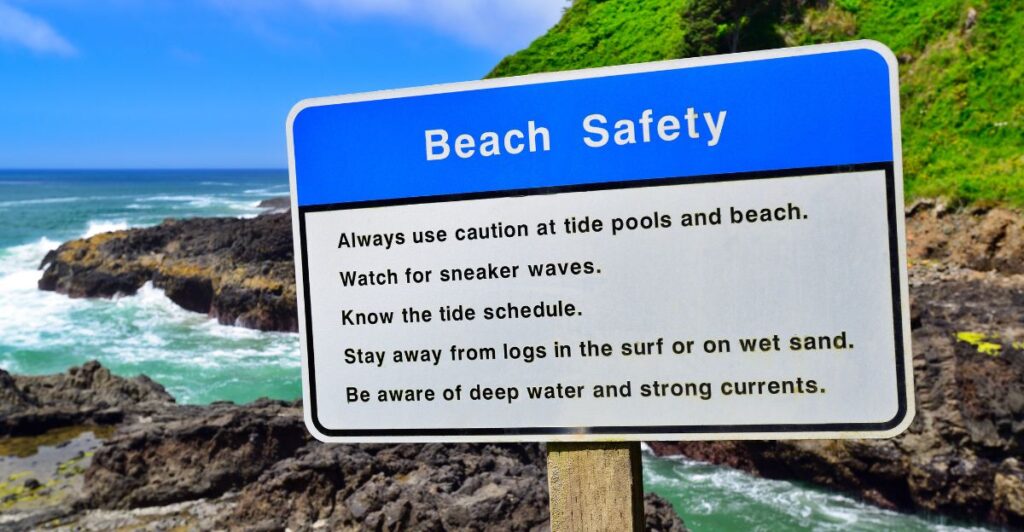
The call to Floridians to avoid beaches amid dangerous ocean conditions is both a necessary precaution and a wake-up call for improved coastal management strategies. This balancing act requires innovative solutions derived from behavioral psychology, environmental science, and technology integration.
By addressing psychological barriers and leveraging global best practices, Palm Beach County can protect lives while sustaining its status as a premier tourist destination.
Explore more of our trending stories and hit Follow to keep them coming to your feed!

Don’t miss out on more stories like this! Hit the Follow button at the top of this article to stay updated with the latest news. Share your thoughts in the comments—we’d love to hear from you!







